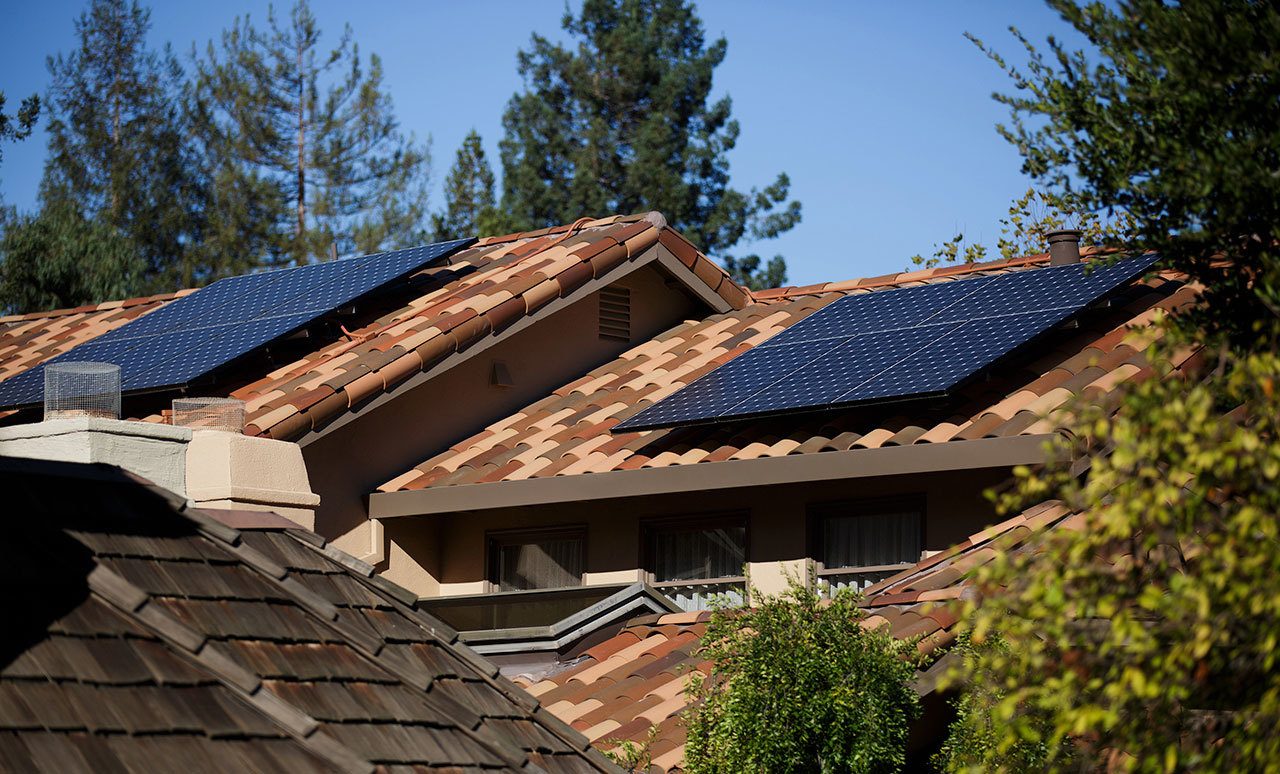By Louis Hansen, The Mercury News
LOS ALTOS, Calif. — Bill Coleman needed to replace the roof on his home. The tech entrepreneur, who lives in this Silicon Valley city, decided to package new roof tiles with a solar power system and a battery unit to store electrical power.
The solar panels have dropped his electric bills to nearly nothing, and the rechargeable battery pack from Sunverge has kept the power on at his house during blackouts. It’s quiet and, so far, hassle-free, he said. The extra expense was worth the peace of mind.
“The lights don’t even blink,” Coleman said. “They stay on.”
Coleman is part of a small but growing group of homeowners coupling solar panels with rechargeable energy storage systems. These battery units provide power during emergencies and can potentially reduce power usage and bills.
But it’s also a new technology, which means it can be expensive and unreliable.
“At this stage of the game, energy storage isn’t quite for everyone,” said Cory Klausmann, vice president of sales at Simmitri. “There’s a select demographic that it works really well with.”
A typical home battery storage unit is a collection of rechargeable, lithium ion batteries, connected to power-generating solar systems.
Home storage systems vary widely in capacity, complexity and price. Battery units range from as small as 2 kilowatt hours to nearly 20 kilowatt hours; by comparison, a typical home uses 30 kilowatt hours of electricity per day.
Residential storage costs between $1,300 and $2,000 per kilowatt hour or about $8,300 to $12,800 for a 6.4 kilowatt hour system, according to Greentech Media. Installation prices vary, too.
Federal and state incentives can reduce the sticker shock. Battery storage for solar systems are eligible for the federal 30 percent investment tax credit. California offers the self generation incentive program, which grants customers rebates based on the size of battery storage. The greater the storage, the bigger the rebate.
In coming years, however, a few things might change to give home storage a better return on investment, including dropping battery prices and regulatory changes. For example, utilities have explored charging residential customers more for peak-time energy — in the morning and evening — that would encourage users to draw less from the grid.
Michelle Mapel, spokeswoman for German battery maker Sonnen, said storage is both an investment in energy independence and an insurance policy. “No one knows what the utilities will be doing,” she said. “It helps you future-proof.”
Storage has other advantages, particularly during emergencies. Solar panels are cut off from the grid during power interruptions — utilities don’t want panels feeding current over wires while repairs are being done. A battery system can take the solar generated power and store it, allowing a homeowner to live off the grid, at least temporarily.
But for most consumers right now, battery storage systems won’t pay for themselves.
You might shave a few dollars off your utility bill by drawing battery power at night. But even in the long run, experts say, the savings won’t cover the cost of a storage system.
“You’re not doing this for the economics of it today. You’re doing it as an early adopter,” said Randy Zechman, CEO of solar installer Clean Solar. “You’re doing it to push the industry forward.”
Besides cost, there’s another reason to think twice before purchasing an energy storage system: the technology is anything but bulletproof right now.
Jim Petersen is CEO of PetersenDean, an area company that installs about 1,000 solar panels systems a month. Only about 5 percent of customers choose battery storage, he said.
His company gets called back on about 10 percent of the battery storage it installs because of flaws in the systems, he said. That’s too high for his liking, he said, and indicates the technology is still maturing.
Petersen recommends established companies with proven technology and stable finances, in case problems arise during the warranty.
Even though the economics of home storage don’t make sense for many homeowners, the market has a growing buzz. Solar industry insiders point to one main reason for the uptick in interest — Tesla.
“This market is 90 percent driven by Tesla,” Zechman said.
The green tech company, which recently acquired SolarCity, introduced home storage last year with the Powerwall. A new, updated version, Powerwall 2, is due out next year. With the promise of advanced, high volume production at its Gigafactory in Nevada, company CEO Elon Musk expects the company to be a big player in the market.
Petersen believes storage will eventually reach most homes. “Within 10 years,” he said, “it’s going to be like any other appliance.”
Talk to us
> Give us your news tips.
> Send us a letter to the editor.
> More Herald contact information.

























